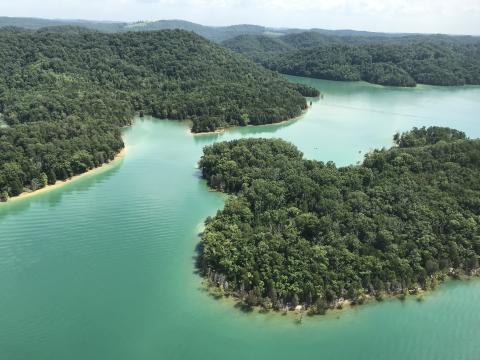Big Ridge trees species are diverse
Big Ridge State Park has a large diversity of trees. The park is around 3,600 acres in size with only a couple hundred acres at most that is mowed and not wooded.
Of course, one of the purposes of our Tennessee state parks is to preserve and protect our natural resources.
This was not always the case. Before the park was set aside for preservation it was farmland with little of it wooded.
The park was set aside for preservation by the TVA in 1936. It might be hard to picture it as farmland instead of the lush forest it is now. The occurrence in nature where the plants take over an area once utilized by humans is called succession.
Primary succession is when the plant life begins where there was none. Secondary succession is where some plants were growing but new plants grow in the place of what was already there.
Big Ridge is considered in secondary succession since grasses and crops were once growing but now many tree species are out competing with what was previously there.
The large diversity of trees is due to this secondary succession. Succession will end with what is called an old growth forest. An old growth forest in this area we live in does not consist of a large diversity of trees—it is primarily oaks and hickories.
When a forest is left natural long enough, oaks and hickories will eventually out-compete other species. Some other old growth species that are sometimes included in our area are trees like the Tulip Poplar and the American Chestnut.
For a little over 80 years Big Ridge has slowly reforested itself but it also has had a little help. While Norris Lake and the parks around it were being developed, the Civilian Conservation Corps was said to have planted over a million trees around the lake shore. The CCC was known to plant trees all across the nation to help with erosion control due to bad farming practices. This effort earned them the nickname Roosevelt’s tree army.
Most of the trees that the CCC planted in this area were pines. Even though an invasive beetle ate and killed most of those pines about 20 years ago, there are still some large pines that no doubt were planted by some of those CCC boys.
Since such a large diversity of trees now grow around the park it would be nearly impossible to list them all, but some notable species are beech, hop hornbeam, slippery elm, American elm, red maple, dogwood, redbud, American holly, ash, black walnut, sycamore, willow, bald cypress, Virginia pine, white pine, cucumber magnolia, many types of oaks, many types of hickories and the tulip poplar, which is our Tennessee state tree.
We also have some species that are restricted to higher elevations like the hemlock, umbrella magnolia, and sourwood. All the species that I have mentioned are just the common names. Common names are not as concrete as the scientific names but are the means that most of us use to refer to a specific type of tree.
Tree identification can be a fun hobby that is low impact on the environment and with all the variety, Big Ridge is a great place for such a hobby.
I hope this article helps some folks have a better appreciation for our natural resources. If you have any questions about trees, contact me, Derek Wilson, at 865-206-9459.
- Log in to post comments

